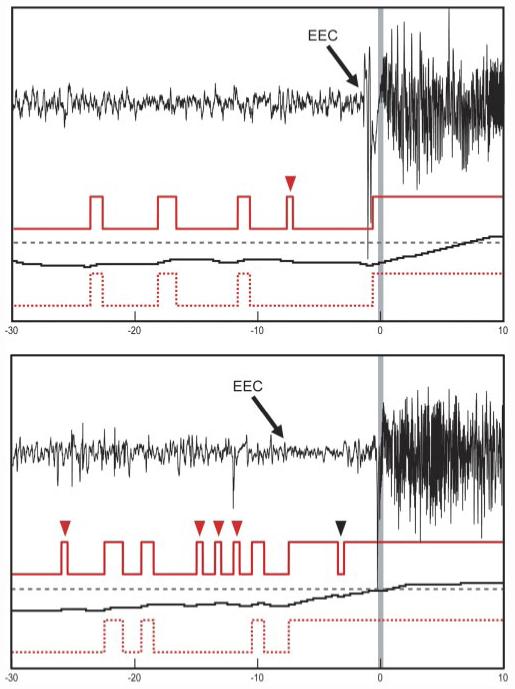FIG. 3.

Two typical seizure onsets, from different patients. Topmost red traces: raw binary support vector machine (SVM)-based seizure detection output. Middle black traces: running probability estimates determined by the particular implementation of the SVM algorithm in Gardner et al. (2006), with a dashed alarm threshold in gray. Bottom red dotted traces: HMM-Viterbi decoding of the raw binary SVM output into “state sequences.” x-axis is time in seconds, with the unequivocal electrographic onset (UEO) indicated by a gray vertical bar set to time = 0. In both examples the onset of the detected state by the HMM-Viterbi decoded method occurs seconds before the UEO, apparently within the earliest electrographic change (EEC) to UEO period, consistent with the algorithm’s original construction as an early seizure detector. The HMM-Viterbi decoded output transitioned to seizure before UEO in these 2 cases, but contained more false alarms, whereas the algorithm as implemented in Gardner et al. (2006) alarmed after UEO, but had many fewer false alarms. Raw detector’s false-positive classifications, as determined by HMM-Viterbi analysis, are indicated by red arrowheads, whereas a false negative is indicated by a black arrowhead.
